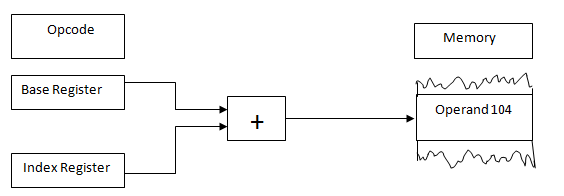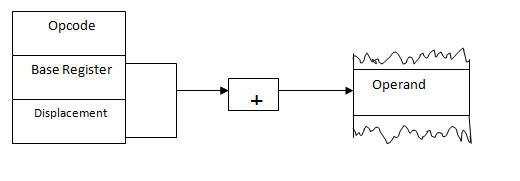8086 寻址方式
Introduction:
介绍:
Addressing mode tells us what is the type of the operand and the way they are accessed from the memory for execution of an instruction and how to fetch particular instruction from the memory. There are mainly 8 addressing modes of an 8086 microprocessor. Let’s discuss them in brief:
寻址模式告诉我们什么类型的操作数,以及如何从内存中访问操作数以执行指令,以及如何从内存中提取特定的指令。 8086微处理器主要有8种寻址模式。 让我们简单地讨论一下:
1) Immediate Addressing Mode
1)立即寻址模式
In this immediate data is the part of the instruction itself.
在该立即数中,数据是指令本身的一部分。
Example: Mov Ax, 0005H
例如: Mov Ax,0005H
2) Absolute/ Direct Addressing Mode
2)绝对/直接寻址模式
In it, a 16-bit memory address (offset) or an input/ output address is directly specified in the instruction as a part of it.
其中,在指令中直接指定16位存储器地址(偏移量)或输入/输出地址作为其一部分。
3) Register Addressing Mode
3)寄存器寻址模式
Here data is stored in a registered and referred using the particular register.
此处,数据存储在一个寄存器中,并使用特定的寄存器进行引用。
4) Register Indirect Addressing Mode
4)寄存器间接寻址模式
In this offset address of data is in either Bx, SI, DI, (Base register, source index or Destination index) default segment is either DS or ES.
在此偏移地址中,数据的地址位于Bx,SI,DI(基址寄存器,源索引或目标索引)中,默认段为DS或ES。
Data is supposed to be available at the address pointed to by the content of any of the above registers in the default data segment.
假定数据在默认数据段中上述任何寄存器的内容所指向的地址处可用。

5) Indexed Addressing Mode
5)索引寻址模式
Here offset of the operand is stored in one of the index registers. DS is the default segment for SI and DI in string instruction DS and ES default segment for register SI and DI.
这里操作数的偏移量存储在索引寄存器之一中。 DS是字符串指令DS中SI和DI的默认段,而ES是寄存器SI和DI中的默认段。
6) Register Relative Addressing Mode
6)寄存器相对寻址模式
In it, data is available at an effective address formed by adding an 8 bit or 16-bit displacement with content, any one of the registers Bx, Bp, SI, DI in the default (DS or ES) segment.
在其中,通过在内容(默认(DS或ES)段中的寄存器Bx,Bp,SI,DI中的任何一个)中添加内容的8位或16位位移形成的有效地址处的数据可用。
7) Based Indexed Addressing Mode
7)基于索引的寻址模式
The effective address of data is formed by adding content of base register Bx or Bp to the content of index register.
数据的有效地址是通过将基址寄存器Bx或Bp的内容添加到索引寄存器的内容而形成的。

8) Relative Based Indexed Addressing Mode
8)基于相对索引的寻址方式
Here the effective address is formed by adding an 8 bit or 16-bit displacement with the sum of the content of any one of the index registers in the default segment.
此处,有效地址是通过将8位或16位位移与默认段中任何索引寄存器的内容之和相加而形成的。

Conclusion:
结论:
In this article, we have discussed the different addressing modes, in brief, will discuss more microprocessors and computer architecture in my upcoming articles. Will see you in my next article till then stay healthy and keep learning!
在本文中,我们讨论了不同的寻址模式 ,简而言之,在我的后续文章中将讨论更多的微处理器和计算机体系结构。 在我的下一篇文章中将看到您,直到您保持健康并继续学习为止!
翻译自: https://www.includehelp.com/embedded-system/different-addressing-modes-of-8086-microprocessor.aspx
8086 寻址方式
:决策树)








方法(带示例))









)